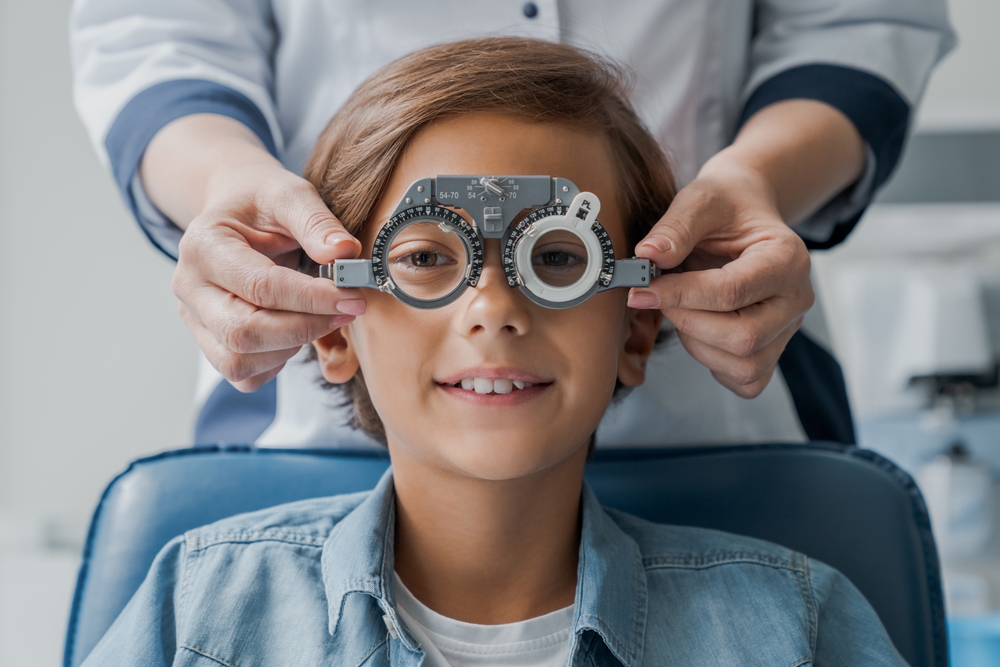Does Your Child Have Myopia? Signs to Look Out For
Blog:Does Your Child Have Myopia? Signs to Look Out For

Does Your Child Have Myopia? Signs to Look Out For
Does Your Child Have Myopia? Signs to Look Out For
Myopia, or nearsightedness, is a common vision condition that often begins in childhood. With myopia, distant objects appear blurry, while close objects remain clear. As children today spend more time on digital devices and engage in indoor activities, myopia rates have been rising. Identifying myopia early can help manage its progression and improve your child’s quality of life. Here are key signs to watch for if you suspect your child may have myopia.
Frequent Squinting
Squinting is a common sign of myopia. Children may squint to temporarily improve their focus on distant objects. If your child squints frequently, especially when trying to see the board in school or while watching TV, it might be a sign they’re struggling to see clearly at a distance.
Sitting Too Close to Screens
Kids with myopia often gravitate toward sitting close to screens because they can’t see clearly from further away. If your child prefers sitting right in front of the television or holds digital devices close to their face, it may be a sign of nearsightedness.
Complaints of Blurry Vision
Children with myopia may start to notice they can't see distant objects as well as they used to. If your child mentions that they’re struggling to see faraway things or if they frequently complain about blurry vision, this could indicate myopia. These complaints are often most noticeable when they’re at school or during activities that involve looking at distant objects.
Poor Performance in School
Vision issues can impact academic performance. If a child can’t see the board or has trouble reading from a distance, they may fall behind or become frustrated in class. A sudden drop in grades or reluctance to engage in school activities could be linked to vision issues.
Excessive Eye Rubbing
Myopia can cause eye strain, especially after activities that require focusing on distant objects. If your child frequently rubs their eyes or complains of eye fatigue, it may be a sign that they’re straining their eyes to see clearly.
Headaches and Eye Strain
Constantly struggling to focus on distant objects can cause headaches and eye strain. If your child experiences headaches regularly, especially after school or activities involving distance vision, it may be due to untreated myopia.
Holding Books Close While Reading
Some children with myopia may find it more comfortable to hold books or reading materials close to their face, even though they don’t need to for reading clarity. If you notice this behavior, it could be an indication that they see better up close than far away.
Schedule Your Child’s Eye Exam with Texas State Optical Today
At Texas State Optical, our comprehensive eye exams are designed to detect vision issues like myopia early. We’ll perform a variety of tests to assess your child’s vision and, if necessary, discuss treatment options that can help manage or slow down myopia progression. Options may include atropine eye drops, MiSight contact lenses, and lifestyle recommendations to support their eye health.
Myopia in children can progress quickly, so early detection is crucial. Regular eye exams not only help with early diagnosis but also provide a clear pathway for treatment that can make a difference in your child’s visual comfort and academic performance.
If you notice any signs of myopia, schedule an eye exam with Texas State Optical. We can help ensure your child’s vision remains as clear as possible, setting them up for success at school, home, and in all their activities. Visit our office in Lumberton, Texas, or call (409) 751-3937 to book an appointment today.


